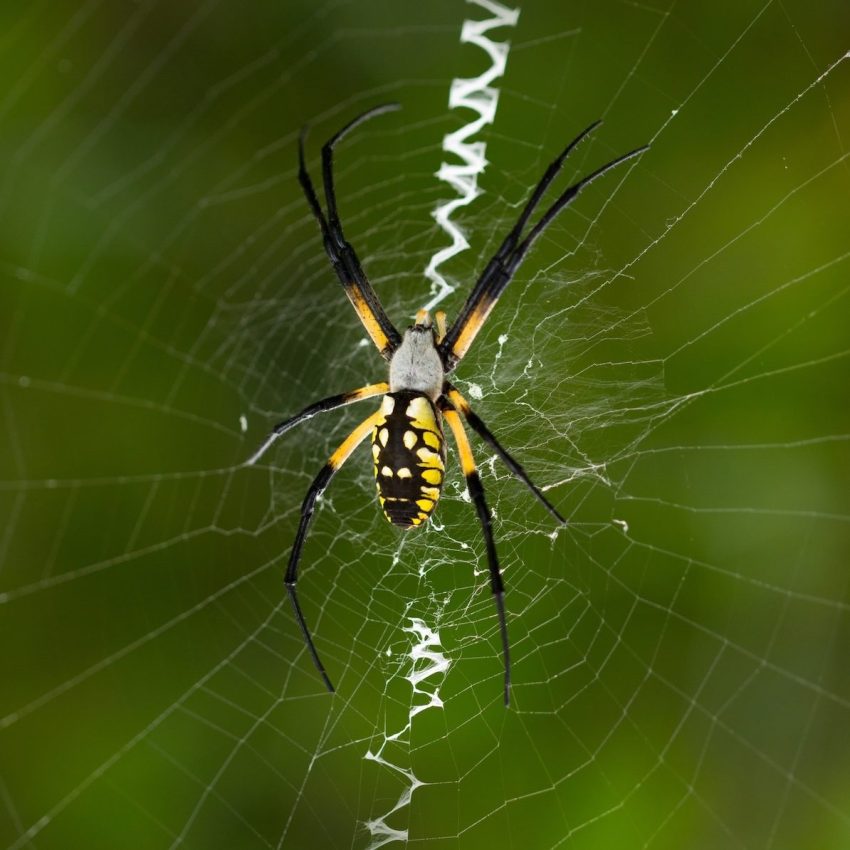Common Garden Spiders in North America
If you’re curious about the arachnids that might be hiding in your garden, there are several common species to be aware of. Among the most frequently encountered are the black and yellow garden spider and the silver and banded garden spider. These spiders are not only fascinating but also play a crucial role in maintaining the balance of your backyard ecosystem.
Garden Spiders Are Beneficial
Although many people find spiders unsettling, they are actually valuable allies in your garden. These creatures act as natural pest controllers, helping to keep populations of insects like aphids and mosquitoes in check. Their presence is similar to that of ladybugs, which are also known for their beneficial impact on gardens. By preying on unwanted pests, garden spiders contribute to a healthier environment without the need for chemical interventions.
Discovering Surprising Facts About Snails
While this article focuses on spiders, it’s worth noting that other small creatures in your garden also have intriguing characteristics. For instance, snails, often overlooked, have unique traits that make them interesting subjects for observation and study.
Garden Spiders Have Big Families
One of the most remarkable aspects of garden spiders is their reproductive capacity. A single female banded garden spider can produce an egg sac containing over 1,000 eggs. This high number ensures that even with the challenges of predation and environmental changes, their species continues to thrive. Understanding this aspect of their life cycle can help foster a greater appreciation for these creatures.
Illuminating Lightning Bug Facts
Another fascinating creature found in gardens is the lightning bug. These bioluminescent insects have their own set of surprising facts, including how they use light signals to communicate and attract mates. Learning more about these bugs can add another layer of interest to your garden exploration.
How Many Spider Species Exist?
When it comes to diversity, spiders are incredibly varied. In North America alone, there are more than 175 types of orb weavers, which are a specific group of spiders known for their circular webs. However, this number is just a small fraction of the approximately 40,000 spider species worldwide. This vast variety highlights the importance of spiders in ecosystems across the globe.
Garden Beetles: Another Backyard Ally
In addition to spiders, garden beetles also contribute to the health of your garden. They help break down organic matter and aerate the soil, making them essential for maintaining fertile ground.
The Size of a Garden Spider’s Web
Garden spiders belong to the orb weaver family, known for their intricate, circular webs. These webs can reach up to two feet in diameter, showcasing the impressive engineering skills of these arachnids. The webs are designed to capture prey, and some female spiders, like the black and yellow garden spider, are capable of eating prey that is twice their size. This ability demonstrates their strength and adaptability.
Amazing Pictures That Change How You See Bugs
Visual representations of spiders and other insects can offer new perspectives on these creatures. Through photographs, you may begin to appreciate their beauty and complexity, which often goes unnoticed in everyday life.
Spiders Don’t Have Great Eyesight
Despite having eight eyes, spiders rely more on their sense of touch and vibration detection than on sight. They often leave their webs and use a single silk thread to detect movement, allowing them to pounce on unsuspecting prey. This unique method of hunting showcases their evolutionary adaptations.
How to Attract Spiders to Your Garden
If you’re interested in encouraging more spiders to take up residence in your garden, there are several strategies you can employ. Creating a welcoming environment involves:
- Laying mulch to provide protection and maintain humidity.
- Offering suitable areas for web attachment, such as shrubs or trellises.
- Leaving parts of your garden undisturbed during the winter to support spider habitats.
- Avoiding the use of pesticides, which can harm both spiders and the insects they control.
By implementing these practices, you can support a thriving population of spiders and enjoy the benefits they bring to your garden.
